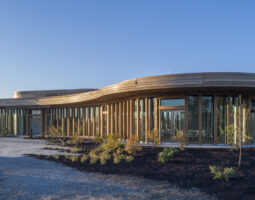Dynamic growth in the numbers of people travelling by plane effected transformation of airports into advanced facilities which efficiently manage passenger flow. Competition never sleeps – the one who is more efficient in servicing thousands of people leaves a good impression and wins new customers. It is a very sensitive market, therefore it pays off for airports to invest in smart solutions in order to maintain profitability. As indicated by the new research by MarketsandMarkets, the global market of smart airports is expected to reach USD 13.5 billion by 2020!
Airports are more than just arrivals and departures halls. They also include runways and airport traffic control towers, which utilise the benefits of highly-advanced automation, like smart gates, navigation technologies, face recognition systems, management of air traffic, luggage and baggage check-in, monitoring of security based on the Internet Protocol (IT) and many others.
I recommend reading the article presenting smart solutions used in airports.
Frustration during the flight? Not anymore.
Passengers in Sydney were annoyed by long queues, lost luggage and delayed flights. The airport decided to start cooperation with IBM. The SPSS Statistic bundle was selected – it is a set of analytic tools which make it possible to compare data on luggage check-ins, air carriers or the number of airport shops and passengers. Careful monitoring and then modification of parameters solved the problem with congestions at the car park, improved access to the passenger lounge and optimised the flow of products through duty-free shops.

source: sydneyairport.com.pl
To avoid long queues, many airports utilise self-service passenger and luggage check-ins, automated authentication of documents, online check-ins from home and tracking the status of flights with the accuracy of 5 minutes. Parking spaces can also be booked online.
The technology implemented in airports allows to save time, both of the passengers and staff. As a result, airport personnel are able to pay greater attention to the passengers who, in turn, rarely need their assistance.
Beacons provide travel support
Nowadays, virtually everyone has mobile devices allowing fast transfer of information. That is why, investments in IoT (the Internet of Things) are becoming more and more common. Beacons are pocket-size wireless devices which can communicate with virtually any smartphone, tablet or laptop by sending a radio signal. They show the way and make it easier for travellers to navigate through terminals. The application analyses the signal, determines passenger’s location and sends him such information as: check-in time, gate number, luggage carousel number and the estimated waiting time for collection of luggage. It also helps in finding your way at the airport. Persons who manage data monitor the time of waiting in queues and receive information on any unexpected changes, thus they are able to rapidly react to incidents and effectively manage the airport staff. With access to custom-fit indicators, they can offer discounts or special offers which are perfectly tailored to the needs of individual customers.
![]()
source: ibeacontrends.com
It is also worth mentioning signalling devices, which show the way and enable its tracking or allow real-time monitoring of resources, sensors for remote monitoring of runways and weather conditions, web cameras connected with face recognition software and digital systems for air traffic control towers. KLM was the first European airline to use this type of technology. Beacons were installed at the gates and along halls at the Amsterdam airport. Other examples are: Virgin Atlantic at the Heathrow airport in London, American Airlines at Dallas/Fort Worth and Japan Airlines at Tokyo Haneda Airport’s Domestic Terminal 1.
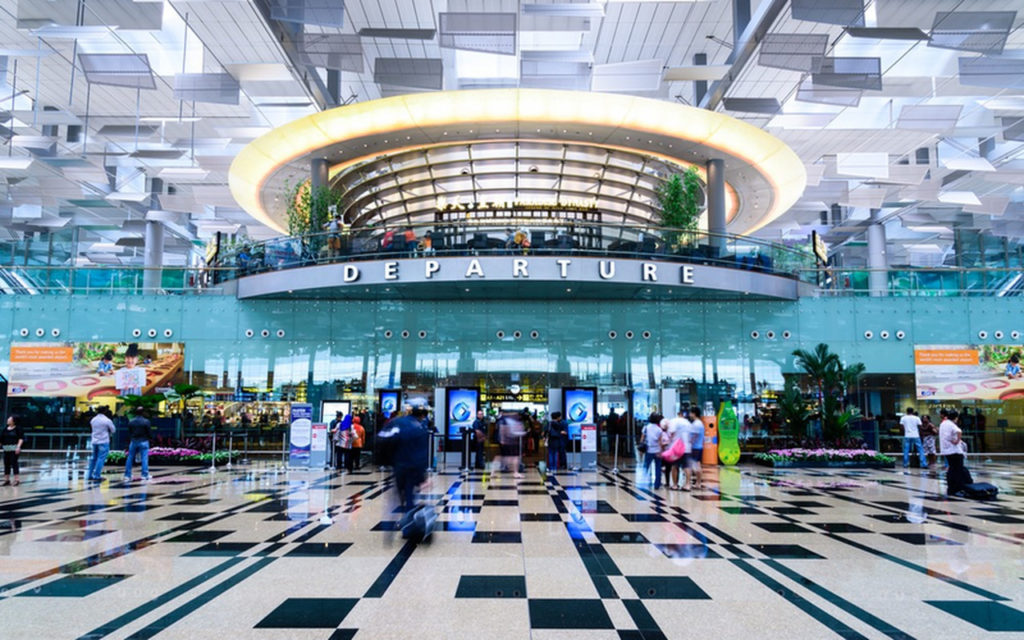
source: Trong Nguyen/Shutterstock
Smart airports around the globe.
Smart solutions are activities which also care about the environment. Biofuels are regularly supplied to the Oslo-Gardermoen airport. After signing a contract with Statoil Aviation, it became the world’s first airport which utilises biofuel in its everyday operation and its hydrant network.
In turn, a publicly accessible WiFi network operates over the area of 100 square kilometres of the Kuala Lumpur International Airport . It is not only a free hotspot service for customers but also a convenience for ground staff, airlines and airplane engineers. Thanks to the smart WiFi network, the airport operates unfailingly at all times.
It is worth mentioning the Dubai International-DXB airport which beats many world records. It is the third largest airport in the world when concerning the number of serviced passengers. It also has the world’s largest total surface area of terminals. The first automatic passenger check gates, which reduce passenger identification times to 10-15 seconds, were installed there as early as in 2002. Currently, there are 127 of them, 20 of which are smart gates equipped with a system which automatically identifies passengers’ identity on the basis of biometric data, face recognition system and iris scanner. While older generation gates required presenting a biometric passport, personal ID of United Arab Emirates is enough for the new gates. The ID can be used by persons aged 18 and more. The Dubai airport’s management plans increasing the number of smart gates in near future in order to more efficiently serve about 20 million visitors expected to arrive at Expo Dubai 2020. Now a little fun fact to end the story – in three terminals, covering the area of 1,972,474 sqm of the main airport in United Arab Emirates, there is room for a duty-free shopping centre, interactive kids’ zones, pavilions for practising yoga and zen gardens with real palm trees, fish pond and benches which invite for a moment of relaxation. All of this is for those who need to wait a bit longer for their check-in.
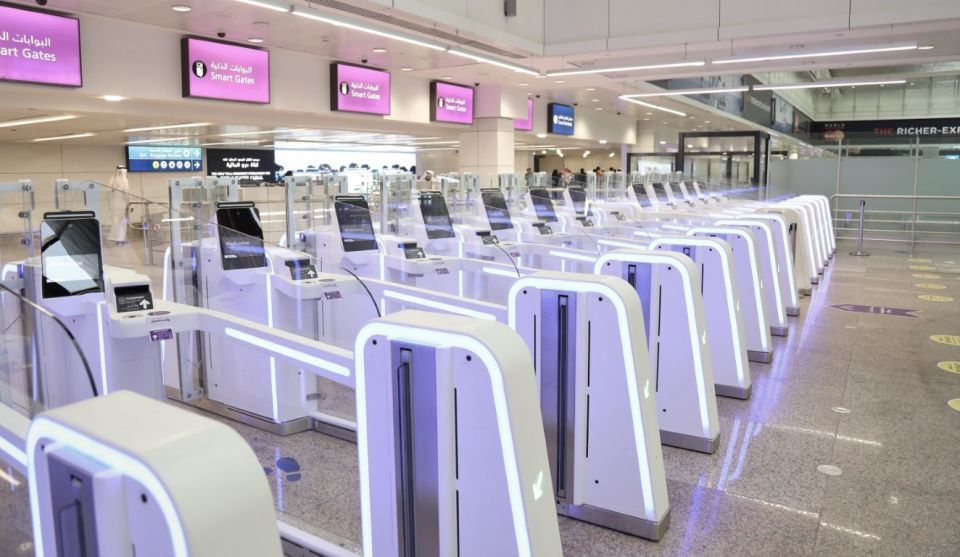
source: arabianbusiness.com
Are Polish terminals smart?
And how does it look like in Poland? An example of Gdańsk Airport – a smart robot replies to customer calls. It provides information on departures of individual planes or informs at which time one should arrive at the airport. It is a convenient solution for passengers who want to save some time. This technology can process even hundreds of thousands phone calls at a time. The smart robot works independently and it holds a conversation almost like a real human being – it can analyse and interpret words and understands intentions and context.
In turn, Wrocław Airport was the first one in Poland to utilise an intelligent system for forecasting passenger flows. It provides data on airport traffic, for example indicating how many security check points should be open at a given time. Servicing of passengers varies between low-cost, business or charter flights. The airport also uses a system which differentiates flows of travellers. Each of them requires different organisation of service. The programme “No more queues” was developed in cooperation with scientists from the Wrocław University of Technology.
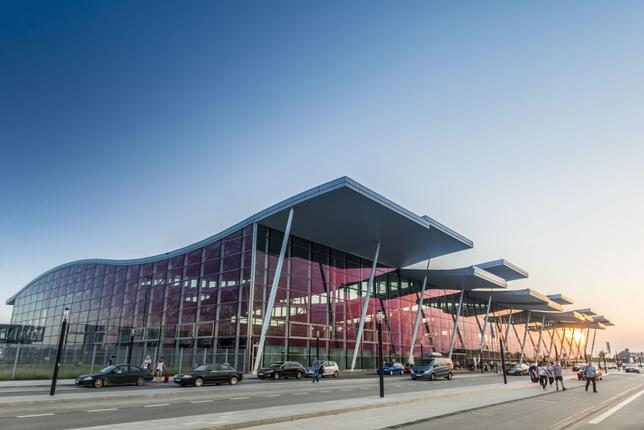
source: turystyka.wp.pl
TOP 10 airports.
Each year, the consulting firm Skytrax presents a ranking of the world’s best airports. It is created on the basis of marks given by near 14 million passengers coming from over 100 countries.
This year, one of the best ten airports in the ranking is a regional Japanese airport named Nagoja Chubu. Thanks to glazed walls, passengers can watch ships approaching the port in Nagoi. There is also place for a traditional Japanese bathhouse. Travellers can relax there while admiring the sunset.
Seul Incheon Airport stands out distinctly. Every year, it is classified amongst the best ones. The airport is situated on an island, on the outskirts of South Korea’s capital city. Among other things, you can find there the following: golf course, casino, spa, gardens and even the Museum of Korean Culture. Its exceptionally efficient luggage transport system can check-in 31 thous. pieces of luggage within an hour.
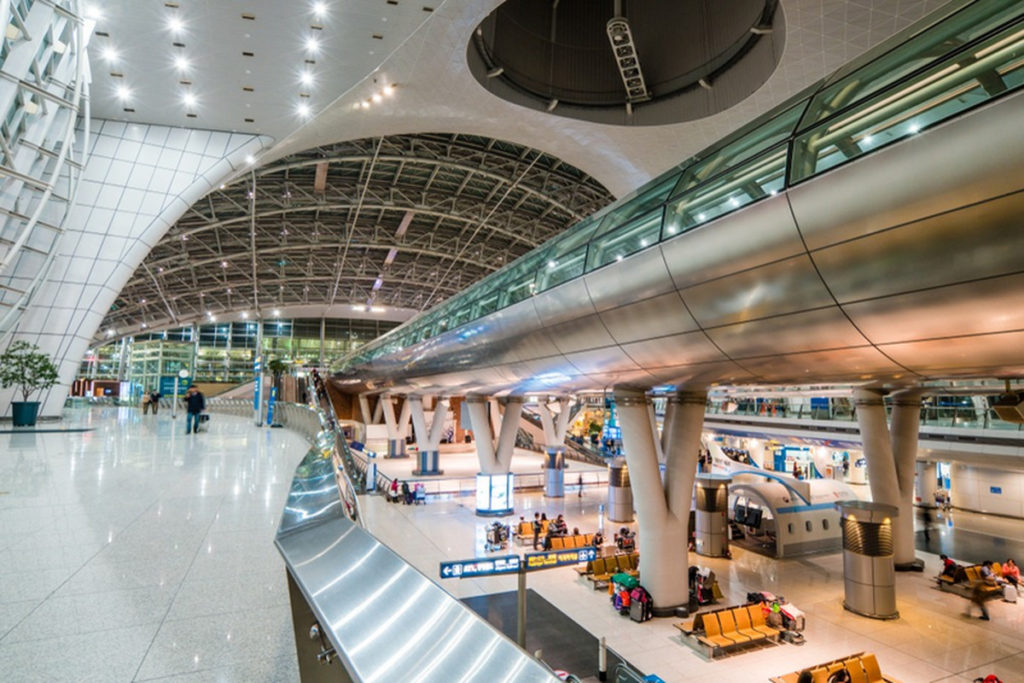
source: SiHo/Shutterstock
The Singaporean Changi airport was place at the very top for the sixth time in a row. Since years, passengers appreciate its beautiful architecture, efficient operation, luxurious amenities and plenty of shops and restaurants. Prices in these shops are lower than in Singapore. What is more, tourists can use a cinema (2 cinemas actually, which show the latest films 24 hours a day), swimming pool with view on a runway, spa and gym. The terminals are perfectly organised. A special Sky Train travels between the terminals. Check-in takes place only just by the entrance to the plane. It is convenient for the passengers – they do not have to dispose of food or water earlier There is abundance of various plants in the terminals.
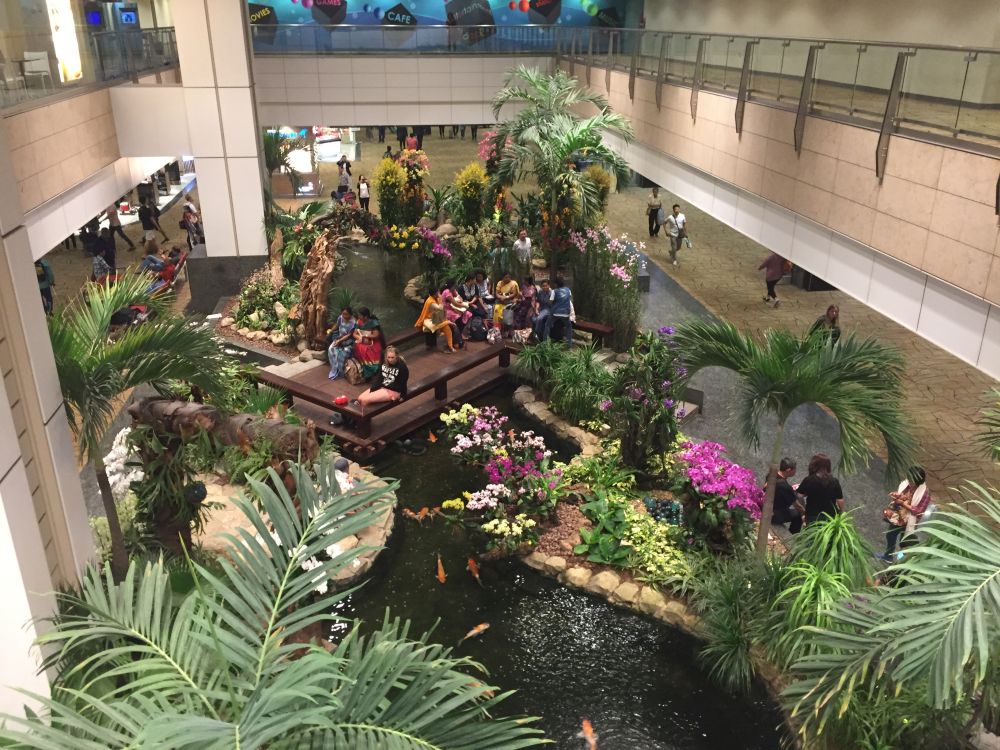
source: Fly4free.pl
What is interesting, over 50% of money earned by the airport are non-aviation revenues.
Exceptional architecture is also an advantage
The airport in Denver is remembered by all travellers who visit it. The characteristic roof of its terminal consists of an undulating forest of white chimneys which narrow at the top. They resemble snow-capped mountain peaks which surround Denver. Its innovative design ensures warmth in winter, while in summer it reflects 20% of solar radiation. This smart airport is very environmentally friendly and, among others, it uses solar energy.
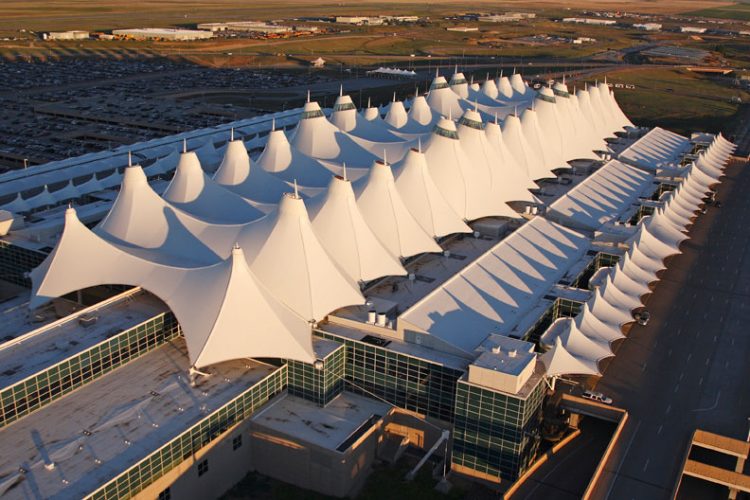
source: www.internationalairportview.com
The international airport in Beijing resembles the symbol of China, that is a dragon. It was one of the largest buildings in the world. Windows in the ceiling, located along the building axis, prevent travellers from losing their orientation inside the airport. Light which enters the building changes its colour – from red to gold.
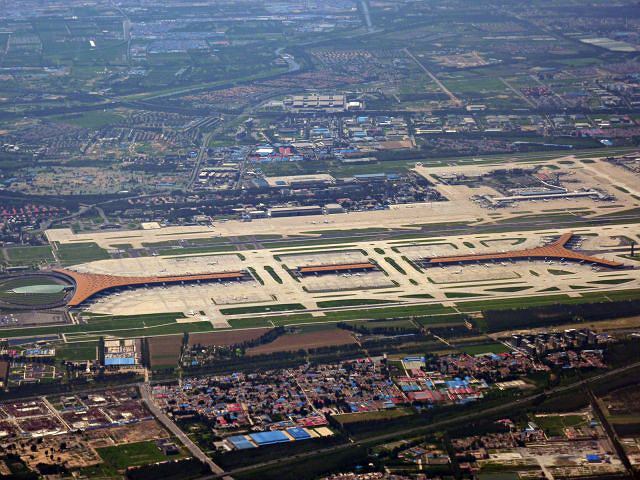
source: Wikipedia/Acidbomber
Kansai airport in Japan is a real masterpiece of engineering. It was constructed on an artificial island formed inside a bay. The building resembles fuselage of a huge aircraft. Its construction took 3 years, that is 10 million working hours performed by 10 thousand workers. The structure has already survived two earthquakes. It is impressive!
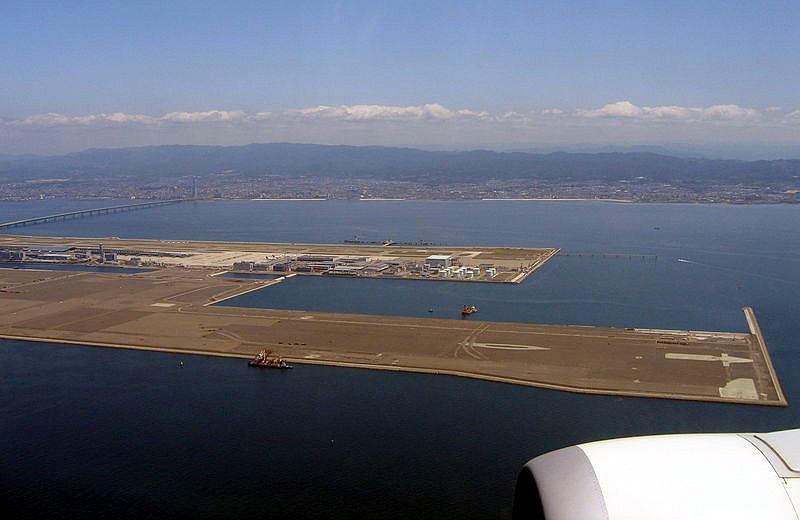
source: Wikipedia/Thorfinn Stainforth
Comfort above all.
What solutions will the future bring? Some time ago, scientists presented a design of a circular runway which would be constructed around an airport. Thanks to the circular shape, planes are supposed to consume less fuel, emit less noise, and they will be able to take off in any direction. On the other hand, there are concerns about safety issues.
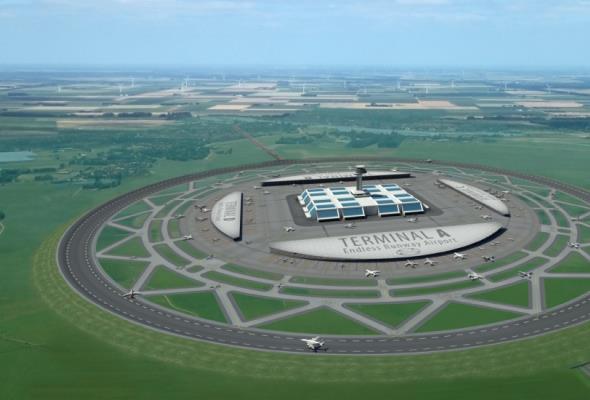
source: rynekinfrastruktury.pl
Big data, robots, artificial intelligence and virtual reality are increasingly applied in civil aviation. I am extremely pleased that more and more airports are putting passengers’ comfort first.






